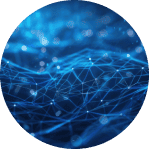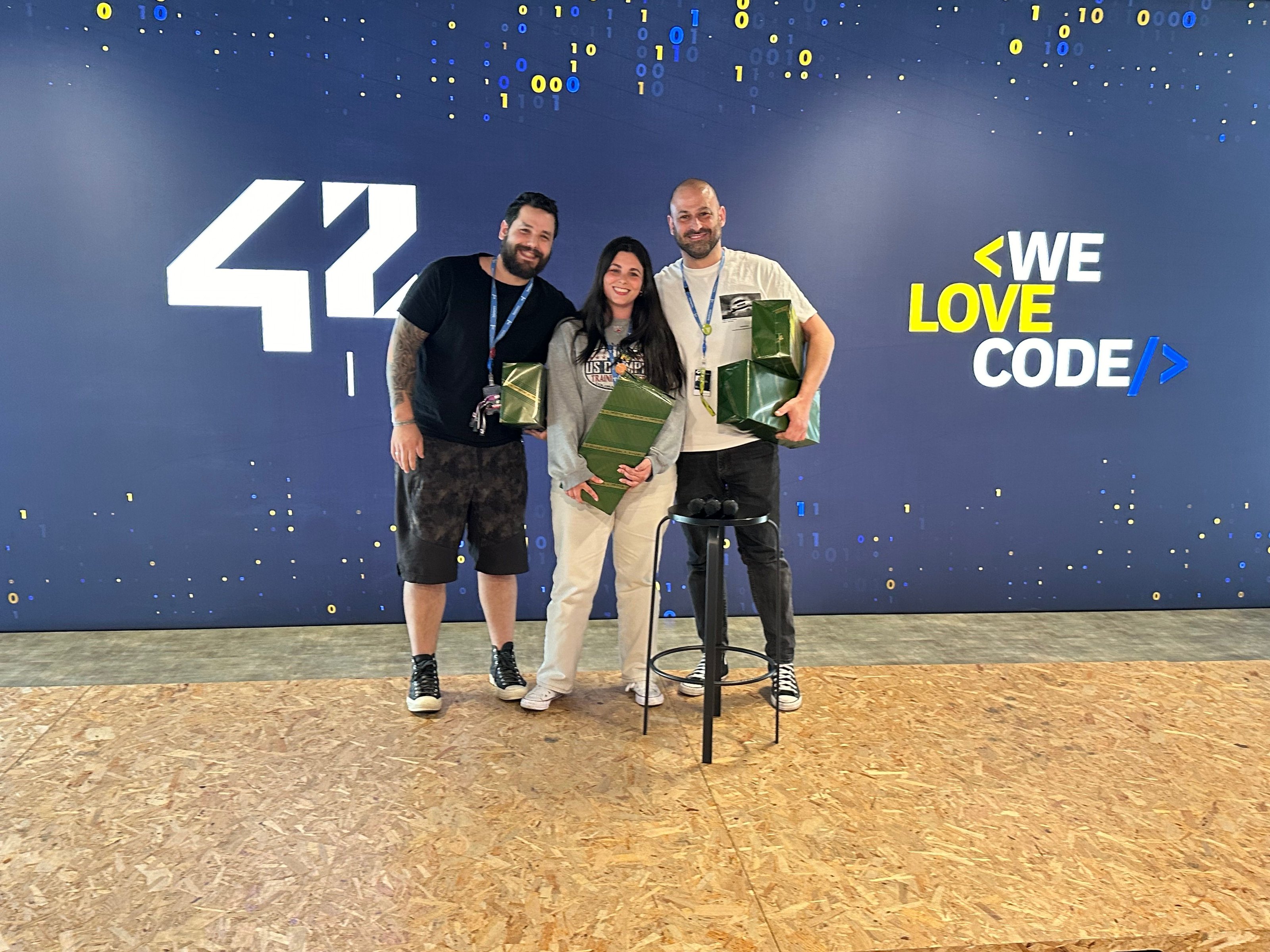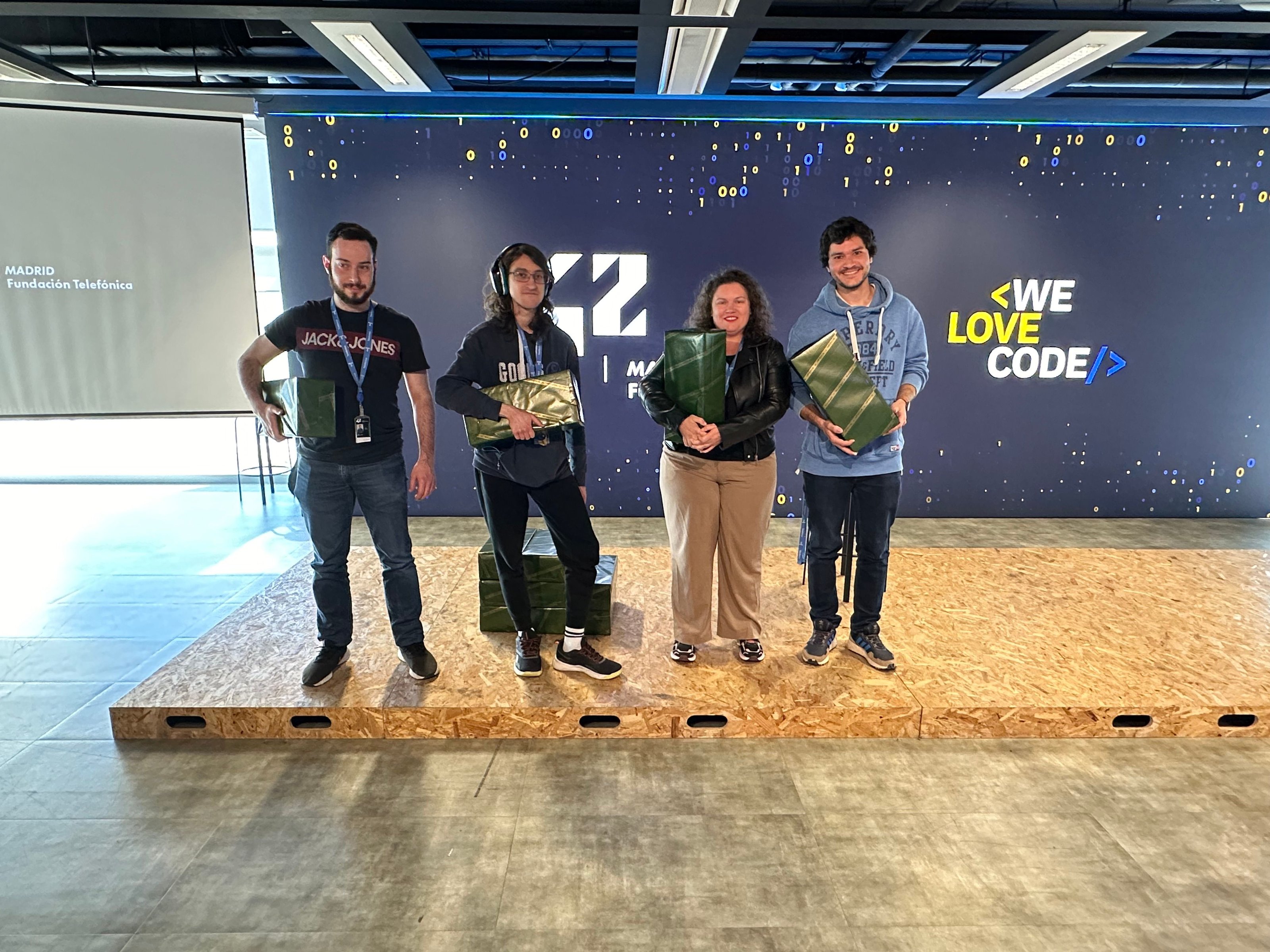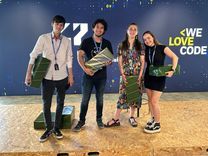Telefónica 100 Ideathon
What will communications look like in the next 100 years?

Fifty students from the free programming campus, 42 Madrid Fundación Telefónica, faced the challenge of imagining how technology and communication will evolve in the next century. We tell you what their ideas were...
On the occasion of Telefónica's centenary, the 42 Madrid Fundación Telefónica programming campus hosted an ‘ideathon’ aimed at the campus students. The aim of this initiative was for future programmers to imagine the future of telecommunications and technology and to devise solutions, services and applications and the role Telefónica will play in three very specific scenarios: - With the advent of the metaverse, 6G and the explosion of artificial intelligence, participants imagined how people will communicate in the near and more distant future. - Faced with the challenge of promoting sustainability by using technology as an ally to reduce environmental impact, the groups came up with solutions or applications that could be implemented for this purpose. - In the field of biotechnology and health, environments where technology is already present and has been a major breakthrough, the boys and girls from 42 Madrid addressed the role of digitalisation and the value of Telefónica as an agent and actor in its implementation. For 48 hours, the 50 participants, applying the 42 methodology of teamwork, practicality and gamification, devised what is yet to come in the scenarios proposed. The students of 42 Madrid took on the challenge of coming up with surprising projects and ideas and defending them before a jury that assessed, in addition to the suitability of the initiatives, the presentation and defence of the solutions, as well as the dynamics of the work they carried out as a team during the Ideathon.
Towards a preventive health service
Faced with the challenge of implementing services and applications that develop and strengthen the doctor-patient relationship within the health sector, the winning group developed an application that would allow anyone to access their medical history. Thanks to technology and decentralised management, this tool would allow patient data to be continuously updated, guaranteeing their privacy and security, and would be accessible both to users and to the specialist or doctor who needs to check them. Omar Alsadi, Andrea Renilla, Daniel Crespo and Lucía Fernández defended their idea with passion and creativity, highlighting that the purpose of this is to anticipate possible health problems, which will guarantee early attention, which will also result in an improvement in the confluence of patients in medical consultations, avoiding possible saturation in health centres.

Digitising Humanity
That was the slogan of the winning team in the category looking for a solution or idea to reduce the environmental impact that technology and telecommunications have. Adrián Liñeiro, Beatriz Macho, Floris Cristian Leonte and Álvaro Morales, with a solid presentation based on real data on the impact that real life has on the environment, devised how technology and telecommunications networks, and therefore Telefónica, can have a very positive impact on the reduction of emissions if future developments are undertaken with the secure and shared use of applications and networks in mind, avoiding collapses on information highways, i.e. network infrastructures.

Communication without limits
The team made up of Sara Meixoeiro, Marina Higueras, Ulises Herrero Sánchez and Marcos Viudes faced the challenge of imagining what communications will be like in the next 100 years and what Telefónica's role in them will be. With Artificial Intelligence (AI) as the technological basis, they proposed creating applications aimed at enabling person-to-person communication, even if there is a language barrier of different languages, thanks to simultaneous translation and even if one of the interlocutors has a disability, given that the app would be able to translate and translate it into effective interpersonal communication. They also added a development designed to improve person-to-device communications, which thanks to IoT and AI will guarantee accessibility and convenience, as well as another integration aimed at machine-to-machine communications, where quantum computing will facilitate instantaneousness and the transmission of greater amounts of information. will be instantaneous, allowing the transmission of greater amounts of information.
